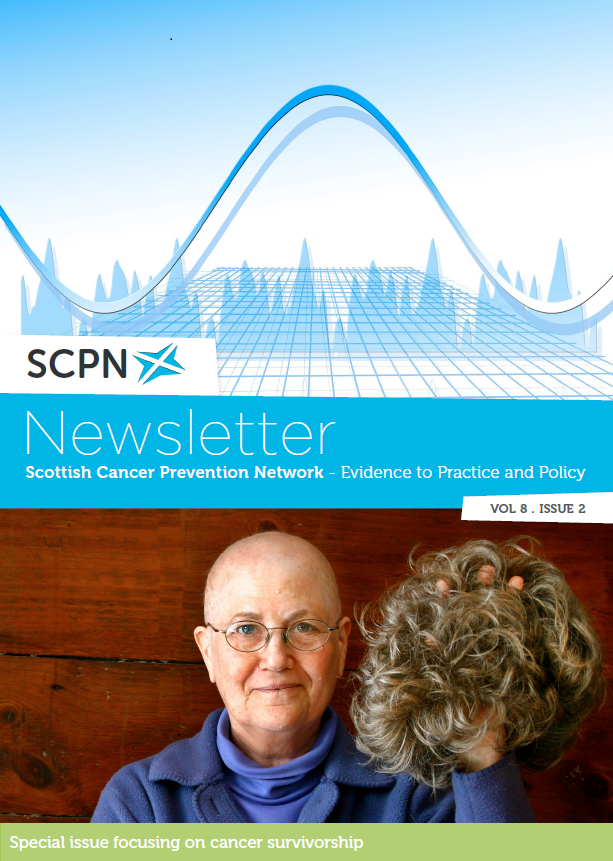
To prevent cancer we need to have an IMPACT on Mental Health

02 May 17 |
By John Watson, Deputy Chief Executive, ASH Scotland
The Scottish Government’s target of being tobacco-free in 2034 would prevent a large proportion of cancers from ever happening.
So it is unfortunate that, as things stand, it will not be achieved.
Continuing the current rate of progress would leave us with a smoking rate of 6.5% by 2034, not far off the actual target of 5%. But that national figure masks huge inequalities in smoking behaviours.
Achieving the 5% target in the most advantaged fifth of the population requires just 30,000 fewer smokers. This will likely happen long before 2034. But that same target demands 230,000 fewer smokers in the most disadvantaged SIMD group. And that’s a whole different story.
Most of these smokers are adults in their 20s, 30, 40s and 50s, who will still be around in 2034 and, on current trends, still smoking. Fortunately most smokers do want to stop – while the Scottish Health Survey reports an adult smoking rate of 21%, two thirds of those say that they want to stop. This means that the actual proportion of willing smokers in Scotland is already down at 7%. And almost 90% of the journey from where we are now to the tobacco-free target is helping people to realise their own stated goal.
One priority is to break the link between mental health and smoking, and that’s what ASH Scotland’s IMPACT (Improving Mental and Physical health, Achieving Cessation Targets) project sets out to do.
Our new guidance materials for community-based mental health services set out the extent to which smoking damages both mental and physical health. But rather than call for further restrictions or policies, we have created a framework for staff to talk to clients about their needs, and work with them to seek less harmful coping mechanisms.
Key issues include:
- One third of all tobacco is used by people with mental health problems, the main reason why this group are dying 10-20 years earlier than the general population
- People with mental health issues are as likely to want to stop smoking as anyone else, but those taking part in the consultation called for discussion and support to help find the right solution for their individual needs
- Those consulted were particularly concerned to hear that smoking interferes with medications so that higher doses are required, with the risk of increased side effects
In response we have developed the AID framework – which stands for Ask, Inform, Discuss. The guidance sets out how staff can talk to clients and give them the best available information and advice, then work with the client to consider what approach will work best for them.
Launching the guide Sheila Duffy, Chief Executive of ASH Scotland, said:
“We’ve learned so much in the process of developing this guidance. We know the harm smoking causes to people with mental health problems, and now it is clear that most of them want to stop and when they manage to do so both their mental and physical health improve.”
But there are services across Scotland engaging with these people every day. If we can demonstrate to those services that tobacco use is part of the support needs of their clients. If we can give them the tools to support their clients to stop using tobacco and find alternatives. If we can persuade them to integrate this approach into their existing activity, we can make a significant difference to achieving the tobacco-free target – with all that means for preventing cancer.
For further information, and to access the guidance materials, visit www.impact.scot.
- Cormie, P, Lamb, S, Newton, RU et al. Implementing exercise in cancer care: study protocol to evaluate a community-based exercise program for people with cancer. BMC Cancer *2017) 17: 103. doi:10.1186/s12885-017-3092-0 http://rdcu.be/o4ij
This article was originally published in The SCPN Newsletter Volume 8, Issue 1. Read the digital newsletter below using Issuu, or feel free to download the PDF.
View the PDF

The SCPN Newsletter: Volume 8, Issue 2
In this issue we have a section focusing on cancer survivorship as well as our regular features - examples of good practice, public health initiatives, recipes and interesting studies which contribute to the body of evidence on cancer prevention.